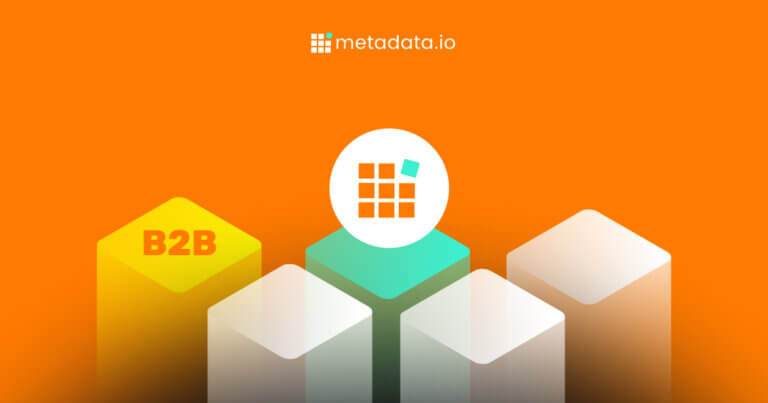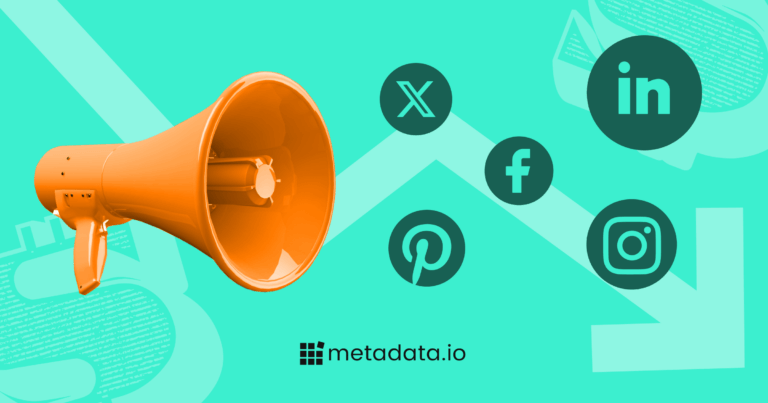A Simple Guide to Smart Targeting
So, you’ve started to see some encouraging signs from your latest marketing campaigns. But, it still seems like your company could be doing more to maximize your budget and get the attention of a wider pool of potential customers.
You’ve done the keyword research. You’ve hired a great copywriter and graphic designer. You’ve launched paid ads on the social platforms your audience loves.
What else can you do?
As you’re now discovering, effective online advertising means understanding how to use it to create more personalized consumer experiences.
Want to know why Amazon always seems to know which products to display that make you want to place a hundred orders every week (for stuff you don’t need and you know it)?
It’s because of smart targeting, a tactic designed to track users’ habits as they move around the internet to establish smarter ad campaigns.
One sign that it’s effective? The fact that 69% of marketers worldwide believe that targeting is essential to connecting with consumers. Smart targeting allows businesses to understand what people want from their shopping experience and make their advertising efforts more personal. It also helps companies predict what consumers might want in the future so they can adjust accordingly.

What is smart targeting?
Smart targeting uses artificial intelligence (AI) to track people’s interests as they use their internet browsers to surf the web.
Have you ever looked up a product after seeing it at a trade show, then later found yourself seeing ads for similar products on multiple other (seemingly) unrelated sites?
The AI goes to work every time you even think about entering a new search term into Google or Bing. It goes to work whenever a customer looks up a product or does research. When done well, it anticipates consumers’ needs before they even know what they’re looking for.
For example, the product research we mentioned above could lead to recommendations for related services that you might never have been planning to buy. But guess what? After seeing 59 ads for similar items with irresistible bells and whistles, your credit card’s out and bam: Your business has a new software service.
The smart targeting worked because it figured out what interested you and linked you to the right product matches.
Smart targeting done well can help businesses get higher conversion rates through digital advertising. For example, an automotive company can pick up on when someone’s looking for a new car or car accessories and send specialized ads their way.
Companies in almost any industry can use machine learning (ML) and AI technology that powers smart targeting. Later, we’ll dive deeper into examples of how some top companies use it successfully with their digital marketing campaigns.
What ISN’T smart targeting?
The key to getting targeting to work for your business is understanding how to craft the right pitch for potential buyers. Knowing about a potential customer’s interest in that subject is one thing. You also have to use the on-hand information intelligently. Your boss isn’t happy about wasting money on ads or recommendations targeted toward people with little to no interest in buying from them.
Smart targeting should push beyond basic demographics. It’s not about making sure your ads reach every CTO of a certain age living in Wisconsin. You want to use the insights that tell you about what makes buyers in that segment distinct, even from one another.
While it’s good to understand niche markets, avoid limiting your potential outreach by making recommendations too narrow. Use the market data collected through your CRM or other software to develop more creative ways to deliver relevant content recommendations.
How smart targeting works
Smart targeting makes all your company’s work in developing a social media presence pay off.
You don’t have to understand everything about how smart targeting systems work (AI, algorithms, machine learning, science stuff, etc.). Just know that they collect information from online spaces, including social media. Instead of pursuing a grandfather from Milwaukee with very little interest in your new billing management software, you can figure out which audience groups have the best lead potential.
Examples of criteria companies can use to set up an intelligent targeting system include:
- Use location
- Device type and usage
- Purchase history
- Referral sources
- Browsing period (time of the day)
- Browsing history
- Site visits
Real estate companies get 57% of website visitors looking to explore listings from organic and paid searches. Smart targeting helps those businesses understand how to optimize paid ads and other smart content to appeal to potential home buyers looking for certain types of listings.
A young single couple looking might show more interest in a condo on the beach than a large family looking for something with a backyard.
When you use smart targeting with B2B marketing, it works very much the same way: The information collected from user browsing sessions gives you a sense of where to find similar buyers.
The kind of predictive analytics made possible through targeting strategies make it easier for B2B marketers to find people at a more advanced sales lifecycle stage. Understanding what buyers want helps businesses make trustworthy recommendations and forge stronger customer relationships.
Key benefits of smart targeting
Tracking the real-time movements of site visitors across the internet presents brands with a unique opportunity to set up more personalized experiences. Smart targeting also helps marketers shape the marketing campaigns used to help business clients. Other benefits of using the technique include:
- Better lead conversion: Smart targeting helps companies find potential customers further along the sales life cycle. Users curious enough to follow a targeted ad recommendation are more likely to be open to buying products or services. It’s also an excellent way for brands to increase engagement with web page visitors and generate more sales.
- Improved customer relations: Users who frequent a company’s landing pages tend to feel more cared for and recognized when they see advertisements relevant to their interests. Companies also avoid unnecessary spending on irrelevant user content. As a result, they can deliver better value to customers, which can increase their sense of loyalty.
- Lower costs: Replacing general ads with more targeted ones increases their effectiveness. As a result, businesses can generate a higher ROI and save money on marketing costs. That’s less money spent on ad placements that generate no revenue. Smart targeting lets companies tighten up their digital marketing strategies, save money, and improve the overall performance of campaigns.
- More versatility: Brands can implement smart targeting across different platforms, including social media and search engines. It’s why the technique gets utilized by most industries, including automotive, real estate, finance, retail, and banking.
4 brands using smart targeting strategies
Some companies make marketing look easy. They know exactly what their customers want and how to shift gears when the winds change. Those organizations know how to leverage smart targeting data collected within tools like a CRM. That means breaking audiences down by information like device preference, language used, and how far they are along in the lifecycle stage.
Below are some great examples of smart targeting from four major brands.
1) BMW
BMW relies on AI to improve its automobiles and marketing strategies, using predictive analytics to learn how drivers use their cars. For example, some people like their seats back and hands resting casually on the wheel, while others still use the stance taught to them in driver’s ed.
The data gets analyzed and used to adjust systems and give drivers a more personalized experience. BMW cars contain an intelligent personal assistant that allows drivers to communicate directly with their car, similar to how they use a smartphone.
2) Nike
Nike decided to take customization to a new level by allowing website visitors to design their sneakers. Red flames and orange stripes around the sides?
Sure, why not?
Nike used those sessions to gather valuable visitor data to pass on to ML predictive algorithms, then incorporated the info to improve future designs and customer recommendations.

3) Wayfair
Wayfair collected data from visitors doing holiday searching and sent targeted emails to list subscribers based on their search. Recipients also got coupons and information on upcoming sales days up through the end of the holiday period. They used what they knew about their customers to provide a better user experience.
4) Starbucks
Starbucks began relying on AI and Big Data in 2016 to enhance its reward program. It helped them forge deeper connections with customers by showing them they took their coffee preferences seriously. The information collected also influences customers’ recommendations when they visit a local Starbucks. Regulars also receive notifications about new beverages that match what they’ve purchased in the past.
Create smarter marketing campaigns with Metadata
The best news of all is you don’t need to be Starbucks or Nike to make smart targeting work for your business. Almost any B2B company can improve their audience targeting on Facebook and LinkedIn.
Pendo increased their Facebook spend by 3X, knowing that with Metadata’s audience targeting, they could get the same quality leads at a fraction of the cost.
The info pulled from users’ browsing histories is a goldmine in helping companies serve up more specific and personalized customer experiences. However, it’s hard for many organizations to sift through all the dirt and find the value within.
Instead of getting lost in the weeds, why not use a platform that’s built to help B2B marketers improve their audience targeting?
Metadata gives you the data insights and workflow automations you need to build better segments, get in front of your audience, and drive more revenue — faster, with less manual work. Let’s talk about how to get you there.



